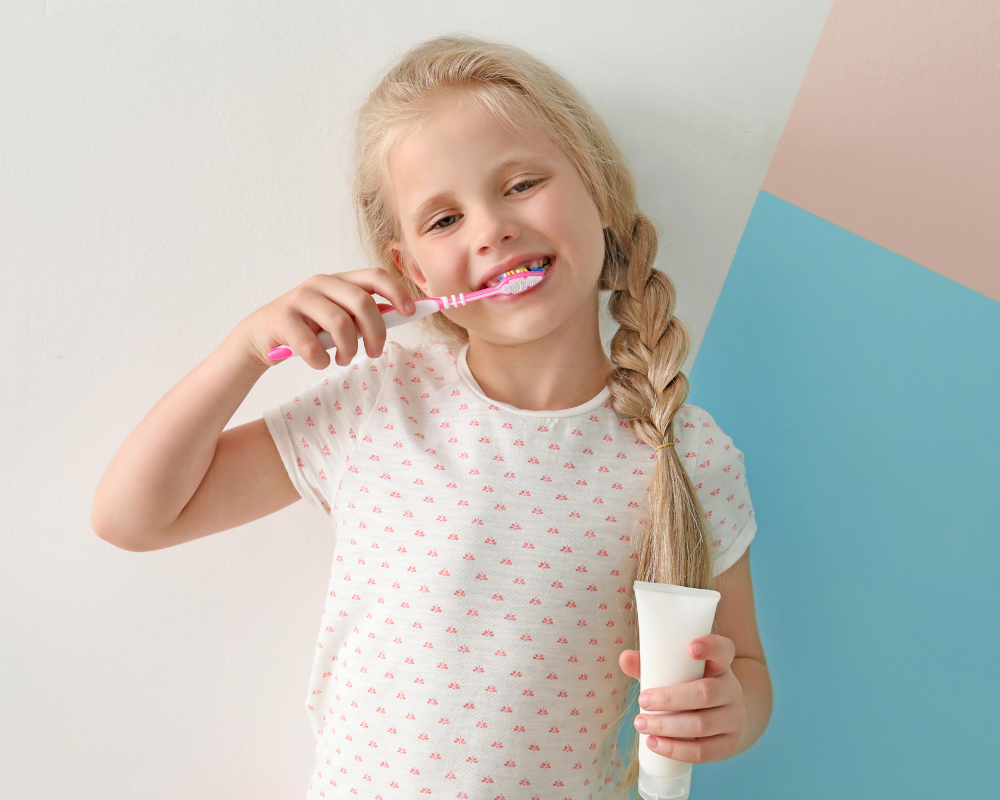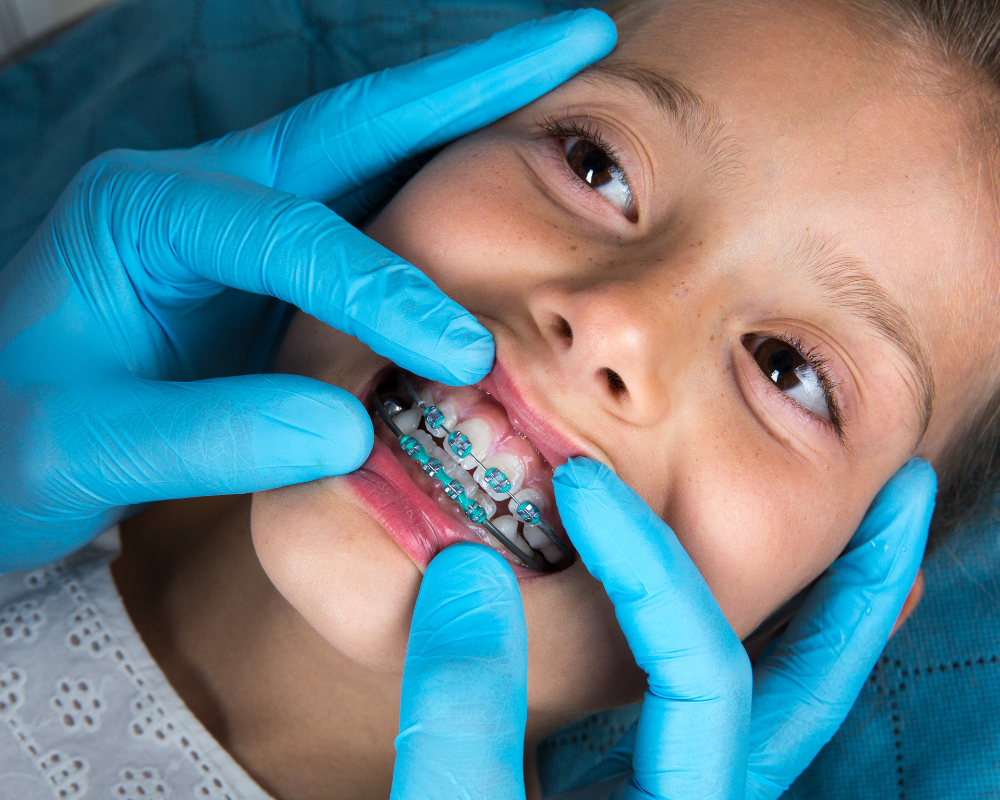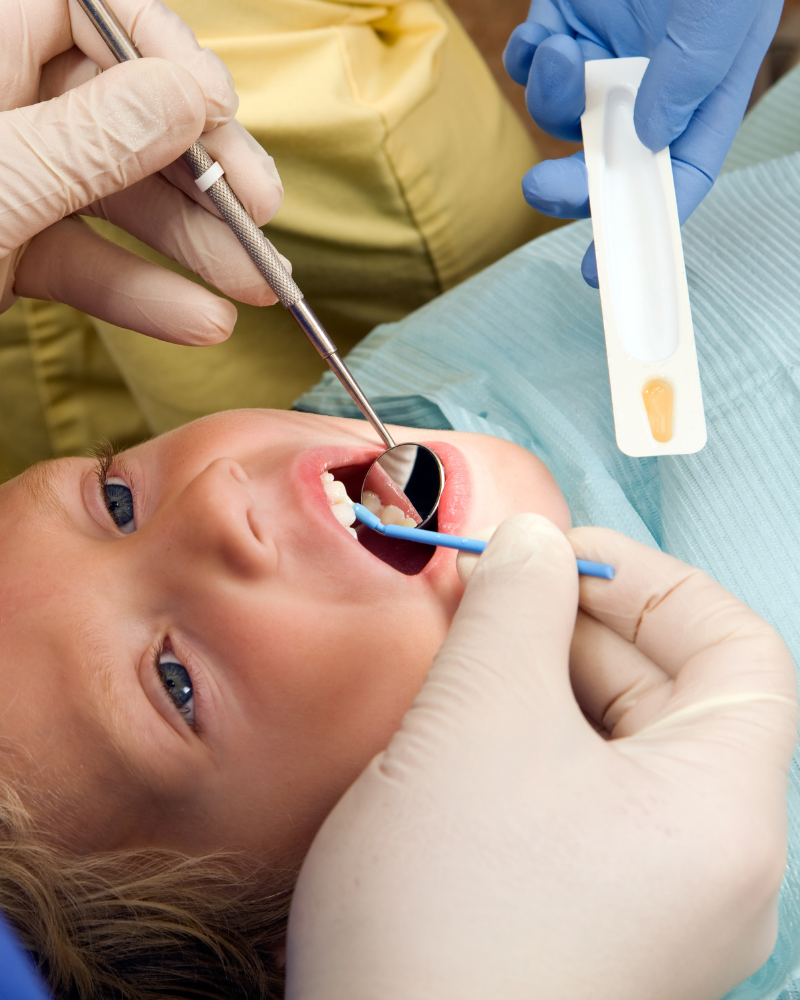Paediatric dentistry

For straight, healthy teeth
Generally, removable braces are used for children between the ages of 6 and 12. These braces make use of jaw growth to correctly control the position of the permanent teeth. It can also involve the muscle functions in order to positively influence the growth of the oral cavity.
Optimal time for the first visit to the orthodontist
A visit to the orthodontist is never too early, but without special anomalies such as cleft lip and palate, we recommend the first visit from the age of 4. A visit is particularly useful from the age of 6, when the first mixed dentition phase begins and the first permanent teeth, the 6-year molars, erupt. This phase can be recognized when the first milk teeth begin to wobble.
Early orthodontic treatment may be necessary during this time, especially if there are specific orthodontic indications. This early treatment, which usually lasts 1.5 years, aims to correct acute problems in order to prevent later complications. It is not intended to correct all teeth, but rather to positively influence growth before all permanent teeth have erupted in the second mixed dentition phase. We recommend making a non-binding appointment for a better assessment of the situation.


Second mixed dentition phase from the age of 9
After the first milk teeth fall out between the ages of 6 and 7, the second mixed dentition phase begins around the age of 9, recognizable by the wobbling of further milk teeth. An orthodontic visit is advisable at this time to monitor correct tooth development.
If treatment becomes necessary, we usually recommend removable braces until all permanent teeth have erupted, usually by the age of 12. A complete treatment plan takes about four years, including an active phase and a holding phase with retainers. In addition, we recommend fixed, inconspicuous retainers behind the front teeth to ensure optimal tooth positions in the long term without impairing pronunciation or hygiene.
Fluoride therapy for children
At the Cambridge Clinic, we offer fluoride therapy as an effective treatment to prevent tooth decay in children. Fluorides are essential trace elements that play an important role in the development of teeth and bones. Our specialized fluoride therapy uses the positive properties of fluorides to strengthen the teeth and make the enamel more resistant to acid attacks.
The therapy comprises several measures: It inhibits the demineralization of the enamel, promotes its remineralization, increases the chemical resistance of the enamel and reduces the risk of caries by inhibiting the activity of caries-causing bacteria. At the Cambridge Clinic, this treatment can be carried out conveniently and safely by using specially formulated fluoride preparations applied directly to the teeth. This treatment is particularly beneficial for children, as it helps to protect the teeth during the important growth phases.

Does my child need treatment?
Click on the button to arrange a non-binding initial consultation.

You ask - we answer
We are happy to answer frequently asked questions to improve understanding of our processes
The first dental examination is recommended as soon as the first tooth appears or by the child’s first birthday at the latest. This helps to monitor dental health early on and establish good oral hygiene habits.
Generally, a six-month check-up is recommended to monitor the child’s dental health and identify any problems early on.
Good oral hygiene starts with brushing teeth regularly twice a day with fluoride toothpaste. It is also important to encourage healthy eating habits and limit the consumption of sugary drinks and snacks.
It is recommended that children be examined by an orthodontist as early as 7 years old. At this time, the specialist can determine early on whether treatment is necessary and when the best time to start it would be.
It’s important to talk openly with your child about the importance of braces and how they will help improve their teeth. Emphasize the positive aspects, such as a more beautiful smile and better dental health. You can also encourage your child to ask questions during the visit to the orthodontist to alleviate any fears.
